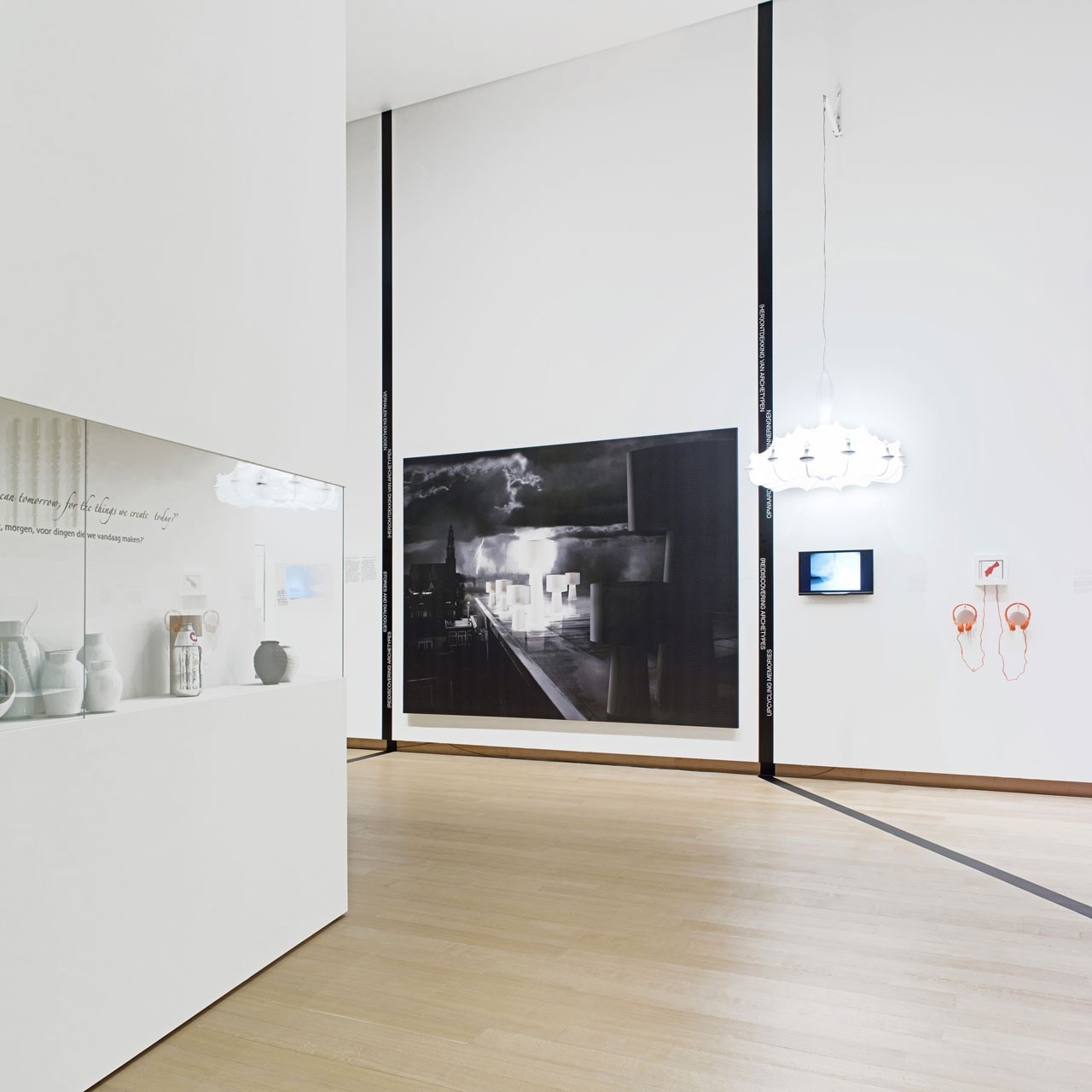
The exhibition is split into three different zones: a black central area, a white one that develops like a peripheral route around it and a third lounge zone. This division expresses the dualism of the designer and a production that features diversity and discovery.
When visiting on the opening day, Wanders explained to me that bipolarity has accompanied his personal career and development as an individual and a designer. “We have divided the exhibition into two hemispheres, left and right;” he told me, “we try to show one side of the analytical world in the rational, educational white zone; it is a positive area that brings beauty into people’s lives. Another way of looking at the same world, however,” continues the designer “reveals a universe where things are less rational, a place of dreams and perhaps doubts, a place that can sometimes be sad and painful. These two worlds are both important and present in my life.”
The exhibition route begins with a forked junction where visitors are asked to make a choice, starting with light or darkness, almost as if unconsciously splitting the public into dreamers and thinkers.

The white zone, in turn, is divided into ten themes, including crafts, narrative, innovation, archetypes and a change in scale. Here, arranged in a traditional linear display are classics such as the Knotted Chair, the Egg Vase, the Zeppelin lamp and the Lace Table, as too bolder experiments such as the Airborne Snotty Vases, printed in 3D and based on virtual models of mucus produced by sneezes.
Contrasting with this luminous space and almost like a showroom, the black zone introduces visitors to more personal and experimental works, shown in grander and more theatrical settings. Here there is a clear intention to create an immersive space, like an underwater journey, with mysterious objects such as lamps worn by half-naked women (three static performances for the opening), gigantic revolving heads and an abstract and perhaps slightly invasive sound landscape.

This zone also features more technological works such as the Wallflower Bouquet and Virtual Interiors, a series of seven dynamic pictures presented for the first time and representing imaginary digital environments, enriched with some Wanders pieces, in certain cases never put into production.
The last zone, the lounge area, finally offers visitors an opportunity to discover catalogues and advertising campaigns linked to Wanders work as a creative director and highlighting some of his partnerships with other big names in the sector such as Jasper Morrison and the Moooi brand, of which he is a cofounder.


The exhibition occupies the basement of the new Stedelijk extension and symbolises the huge variety in his work, from experimental materials and craft techniques abounding with decoration to sculptures that are off the scale. The Wanders studio created the exhibition design, which is why perhaps we expected more imposing and previously unseen scenarios.
We struggled to find a common thread in so much diversity but Marcel reassured us, confessing that he and where his curiosity has taken him are the leitmotiv of this story. It is interesting to observe from this itinerary that, despite the commercial success of some of his interiors, Wanders has not abandoned the search for materials or his ironic approach to product design. The exhibition route does, however, leave visitors thirsty for a better grasp of the process behind these experiments, in an attempt to understand craft and material aspects little explored in the exhibition.


Until 15 June 2014
Pinned Up: 25 Years of Design
Stedelijk Museum
Museumplein 10, Amsterdam

Besenzoni brings sea reflections to the Fuorisalone
An installation for Milano Design Week 2025 celebrates the experience of sailing between open sea and light, made unique by the innovative character of the Manta helm seat.


